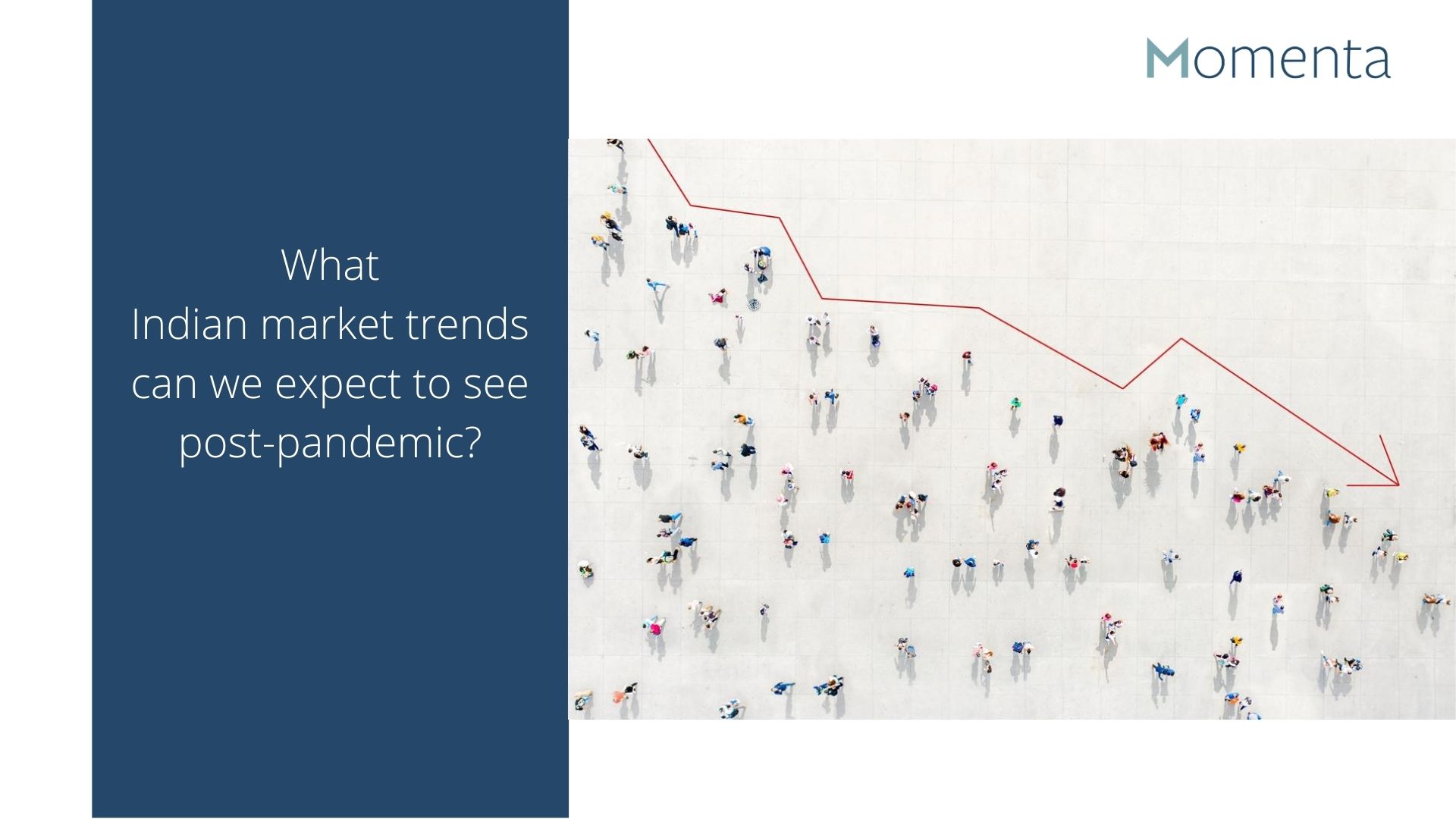What Indian market trends can we expect to see post-pandemic?
A biological disease will determine the fate of economic markets, many have never had to predict or deal with it. Global markets rest of the hopes that a vaccine will be made quickly so that business can resume to BAU, but until then, the lockdown and remote workforces will continue with the backing of the government grants and loans. The issue here is the long-term implications of the increased deficits India faces.
We have seen markets change and adjust to new normalities and there is no doubt that global financial markets will be seeing hardships in the coming year. The intricacy of global financial markets displays a domino effect of how when one aspect of the market is changed, the trickle effect can be seen across the board- globally.
This can also be as much of a political pandemic as it is a medical one. No one true prediction can be made, and we will see even the most advanced economies enter recessions. The human cost of the pandemic is the most severe one. With hundreds of thousands of deaths globally, there should be no trade-off between the safety of lives and that of the safety of livelihoods. Policymakers need to ensure people’s basic needs are met and allow for the market to be stabilised as pandemic passes.
There is no escaping the fact that new normalities will need to be defined in a post-COVID -19 world. Many ask what our new normal will look like, from the way we engage with others to what state the financial markets will be in. The world economic outlook can be labelled as a crisis like no other, and there is no definite answer as to what markets will look like post-pandemic. However, there is one inevitable truth- change. So, what exactly does this change mean for the Indian industry and what trends can we expect to develop?
- Increased healthcare infrastructure
One expectancy that we will see post-pandemic is the increase in investment in the infrastructure of Indian health systems, to be better prepared for future pandemics and medical disasters such as COVID-19. There are even talks of insurance around this type of disaster, like ones related to natural disasters such as flooding or earthquakes.
- Contingency plans will continue to develop
Our world as we know will reach new normalities and contingency planning will only increase in multiple sectors especially financial service sectors. COVID-19 has been a wake-up call for many organisations in terms of updating their digital platforms and practises as well as ensuring that their businesses become more resilient in times of global shutdowns.
- Prepare for a fully digital world
Digital trade will be a key developed in a post-pandemic world. Digitally inclined trade will be developed and traded creating new norms for economic markets. Fully integrated systems will be developed in hopes that eCommerce platforms will pick up on the day to day trade that the high streets once offered. Business models will need to change to adapt and online will remain super post- COVID -19, suggesting that the digital payments will need to be stronger than ever. We will witness Indian banks become more digitally savvy, with technology that allows for digital and online interactions only with their customers.
- The need for Innovation will be fundamental
Newmarket outlooks need innovations to drive them and technology will better financially service by building new platforms to help businesses adapt and become more agile whilst adjusting to new market norms. We have already seen examples of innovations throughout the sector, with fintech tech at the forefront and could very well take center stage in a post- COVID-19 world. Financial services especially banks will require new agile approaches to bring resilience into their systems. Those in financial services have acted swiftly to digitise systems ad platforms to adjust to new ways of conducting business that has allowed their isolated customers to keep actively engaging with them. Post-pandemic will see a surge in demand for technology to allow for digital-only interaction, powered by technologies such as AI, machine learning, and big data. Expect to also witness the regulation of crypt and more impletion of blockchain technology as faster, safer, and digitised payment systems will need to implement in organisations and financial services.
- High demand for skills and jobs
Yes, it may appear all doom and gloom now, but in a post-pandemic world, you can expect to see an influx and high demand for roles to be filled globally in multiple sectors when demand increases. New jobs and skills will be required as the world, how we trade, and conduct business will be more digitally inclined. We have seen two key trends in workforces over the last several weeks. The first being the change from permanent roles to contingent ones, and the second, organisations cutting costs by hiring on a project basis rather than attaining permanent staff. Now more than ever individuals are leaving their 9-5 roles as a result of redundancies caused by the pandemic. Many have taken on new remote contingent roles in varying industries, especially in customer services and various eCommerce platforms. Organisations are also turning to the contingent workforce to drive additional pressure placed on them to cope with increased demands they are and will be facing. Trends in the market reveal that many organisations are starting to plan for the influx of work they can expect in the months ahead now and are doing so by resourcing a contingent workforce that can solve the issue of additional demand and supply.
6. The rise of the contingent workforce
Businesses will now also turn to the contingent workforce to help guide and manage the transition into new market models and develop new strategies to allow them to survive COVID-19’s impacts on the economy. Now more than ever we will start to see the rise of remote roles being placed especially with the additional demand for roles needed. As customers can no longer physically visit banks, Indian banks have reported an influx of support calls around interest rates and payment breaks. Banks are experiencing significant increases in customer calls. Contingent workforces are being resourced to fill the additional demands companies are facing as a result of COVID.

